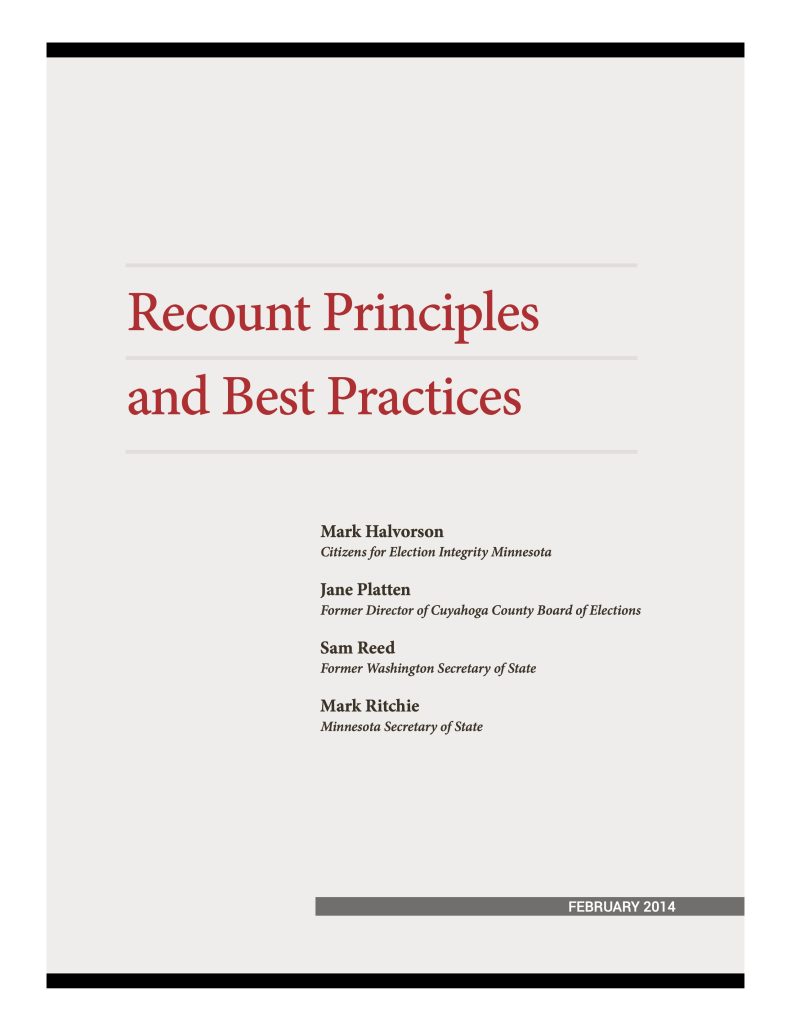
Publication Introduction
Recounts are common, but the vast majority are small recounts that receive little attention outside their locality. Most notable are the occasional high-profile, statewide recounts that attract wide attention and bring scrutiny to every action of election officials. These are high-stakes, emotionally charged events that stress our election systems, exhaust election officials, and reveal on a world stage the areas for improvement present in every election.
Although recounts challenge us, they serve an important purpose in our democracy. Foremost, properly conducted recounts assure candidates and the public that in a close election, there has been a fair examination of the procedures and an accurate count of all legally cast votes.
Recounts can also help us improve election systems. Any shortcomings in our voting equipment, ballot design, and ballot processing are revealed by the scrutiny of a recount. In addition, the administrative and security protocols and the overall pre-election planning are tested in this process, all in the public view.
The recommendations made in this document are based on the authors’ recount experience as well as on input from a blue ribbon recount panel. Contained in the document are principles and practices for recounts along with one fundamental message: Above all, be prepared.
These principles and best practices are designed to help candidates, election officials, policy makers, and the public improve recount statutes and administrative rules. This document includes some management guidance, but it is not addressed in detail. Also excluded is any discussion of election contests: the reliance on the courts to determine the winner of an election. The guidance offered in this document is aimed at minimizing petitions for court interventions during the recount, as well as the need for post-election contests, by improving the legal and administrative framework necessary for fair, transparent, and accurate recounts.